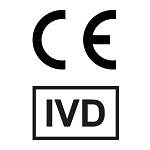Our FGFR3 break apart probe is designed to detect FGFR3 translocations. The probe comes labeled in orange and green, but can be customized to meet your needs.
Gene Background: FGFR3 gene translocations are recurrent cytogenetic aberrations in multiple myeloma (MM), bladder cancer, glioblastoma, peripheral T-cell lymphoma, and lung squamous cell carcinoma.1,2,3,4 FGFR3 encodes a transmembrane receptor tyrosine kinase that triggers activation of several downstream signaling cascades.5 The gene develops oncogenic function via fusion with several different partner genes, which generally leads to ligand-independent activation of the tyrosine kinase of the fusion protein.5

** This product is for in vitro and research use only. This product is not intended for diagnostic use.
Gene Summary
This gene encodes a member of the fibroblast growth factor receptor (FGFR) family, with its amino acid sequence being highly conserved between members and among divergent species. FGFR family members differ from one another in their ligand affinities and tissue distribution. A full-length representative protein would consist of an extracellular region, composed of three immunoglobulin-like domains, a single hydrophobic membrane-spanning segment and a cytoplasmic tyrosine kinase domain. The extracellular portion of the protein interacts with fibroblast growth factors, setting in motion a cascade of downstream signals, ultimately influencing mitogenesis and differentiation. This particular family member binds acidic and basic fibroblast growth hormone and plays a role in bone development and maintenance. Mutations in this gene lead to craniosynostosis and multiple types of skeletal dysplasia. [provided by RefSeq, Aug 2017]
Gene Details
Gene Symbol: FGFR3
Gene Name: Fibroblast Growth Factor Receptor 3
Chromosome: CHR4: 1795038-1810599
Locus: 4p16.3




